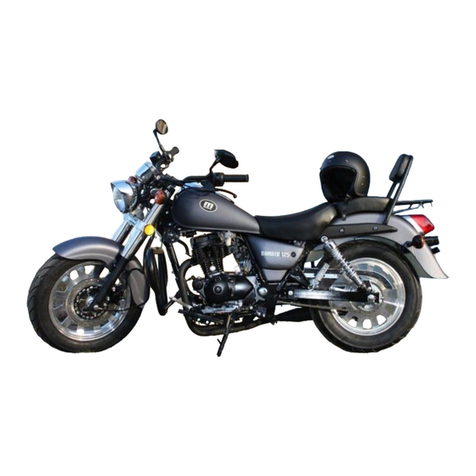Precautions for Safe Riding
Please obey local traffic regulations. It is advised to control your speed
within safe limits.
Practice before Riding
Before riding the motorcycle, practice in a spacious and traffic-free
place so that you are familiar with the motorcycle's controls. Practice is
essential to safety.
Knowing Your Safe Speed Limit
Safe speed limits varies in accordance with the road conditions, riding
skill and the weather.
Be Careful in the Rain
It is more dangerous to ride on a moist or wet road. Therefore, high
speed should be avoided and special care should be taken when turning.
Keep in mind the braking distance on a wet road is greater than in the dry.
Helmet
Wear a helmet whenever you ride, and fasten the strap whenever you
wear the helmet.
Clothing Recommendation
Hi-Viz and well-fitting clothes are recommended. Make sure that the
clothes allow the limbs to move freely.
Specialist motorcycle clothing and footwear are recommended.
Indispensable Maintenance and Inspection
The following items are indispensable:
Inspect your bike before riding.
If covering low mileage, ensure you have a half year inspection.
Adhere to the Maintenance Schedule.
Care of the Exhaust
The high temperature of the Exhaust can burn. Please park your
motorcycle where there is little chance of it touching anything.
Modification
Modification to the motorcycle may invalidate your warranty, consult your dealer
first.




























